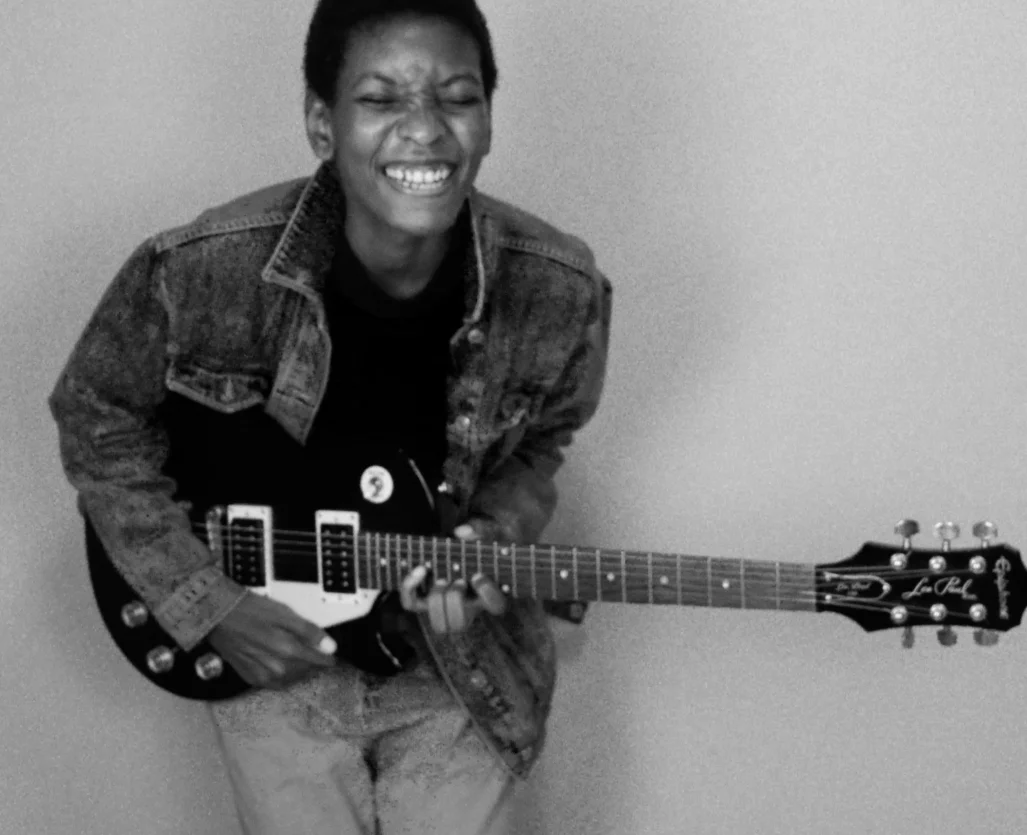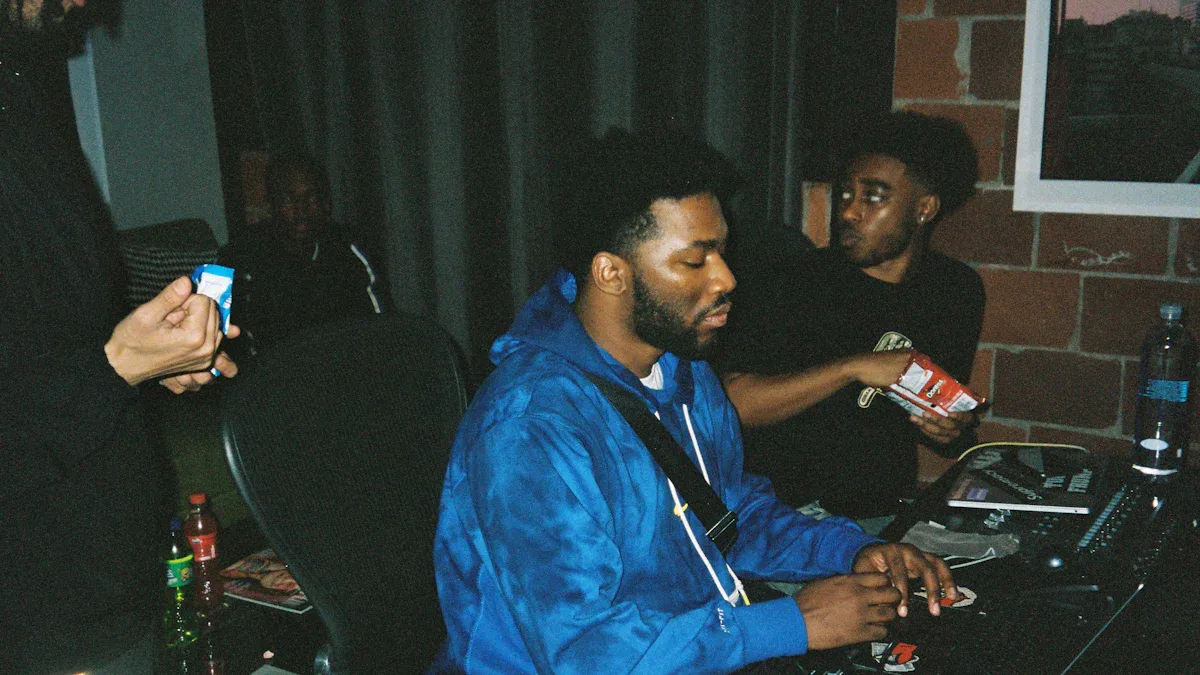Metal music is incredibly diverse, with a wide range of subgenres that have evolved from its heavy roots. For newcomers, it can be a bit overwhelming to navigate. Whether you’re just getting into metal, a casual listener, or a long-time fan, this guide will break down the most iconic subgenres, what makes them unique, and the legendary bands that shaped them.
Thrash Metal
Thrash metal exploded in the 1980s, blending speed, aggression, and a punk-inspired attitude. With its fast tempos, shredding guitar solos, and intense energy, thrash took metal to new heights. If heavy metal laid the foundation, thrash poured on the fuel and lit the fire. Lyrically, thrash often dives into social issues, with rebellion at the heart of its songs.
Notable Bands:
- The “Big Four” of American thrash: Metallica, Slayer, Megadeth, and Anthrax.
- Germany’s thrash scene: Sodom, Kreator, Destruction, and Tankard.
Thrash also helped spawn subgenres like speed metal, which leans even more into that raw punk energy. Bands like Motörhead are a great introduction to this fast-paced style.
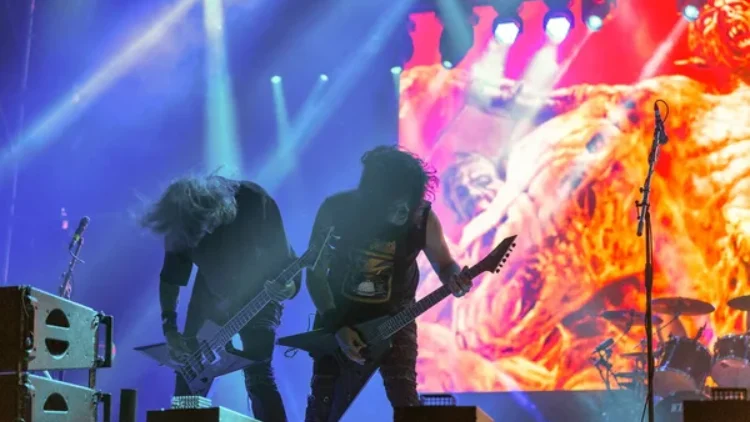
Groove Metal
Groove metal emerged in the 1990s, slowing things down but making up for it with heavy, chugging riffs and an overwhelming sense of power. Think of it as thrash metal’s anger turned into a slow, crushing stomp. The vocals often shifted from intense roars to gritty, raspy bellows, adding to the genre’s raw, in-your-face energy.
Notable Bands:
- Pantera (albums like Vulgar Display of Power and Far Beyond Driven).
- Lamb of God, Sepultura, and Soulfly.
Groove metal is all about maximizing aggression without relying on lightning-fast tempos.
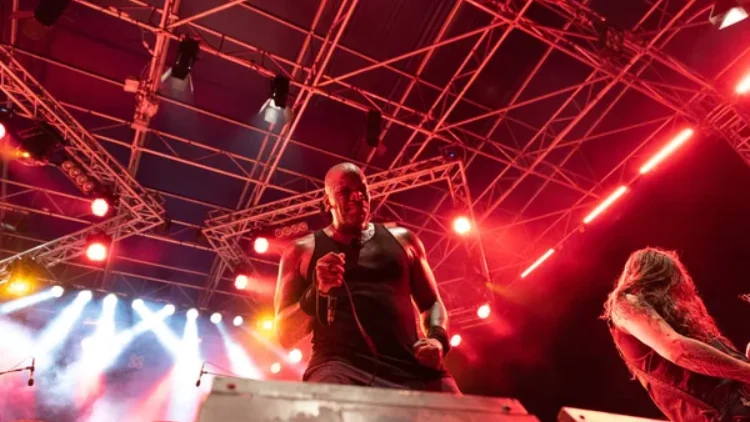
Power Metal
Power metal is the high-fantasy, dramatic cousin of metal. Everything is cranked up to 11—soaring, often high-pitched vocals, epic melodies, and lyrics that dive into mythology, history, and heroic tales. This is the most anthemic and upbeat side of metal, trading raw aggression for theatrical grandeur.
Notable Bands:
- DragonForce, Blind Guardian, Rhapsody of Fire, and Camelot.
Power metal feels like the soundtrack for slaying dragons or leading an army into battle.
Death Metal
Death metal’s influence on heavy music is undeniable. Emerging in the 1980s, it took metal to a darker, heavier, and more guttural place. Expect down-tuned guitars, growling vocals, and lyrics that explore everything from horror to deep existential themes.
Notable Bands:
- Pioneers like Death, Morbid Angel, Cannibal Corpse, Obituary, and Deicide.
Death metal also spawned a ton of subgenres, each creating its own distinct sound and following.
Technical Death Metal
This subgenre takes things to the next level with mind-blowing musicianship and unpredictable structures. It’s like death metal with a Ph.D. Bands like Cynic, Archspire, and Rings of Saturn push the boundaries of the genre with unmatched speed and precision.
Melodic Death Metal
By adding harmonies and atmosphere to death metal, bands like Amon Amarth, In Flames, and At the Gates crafted music that’s as brutal as it is beautiful.
Brutal Death Metal
Take death metal and push the heaviness to extreme levels. Bands like Suffocation, Devourment, and Nile dominate this brutal style.
Black Metal
Black metal takes metal to a raw, primal place. Known for its dark atmosphere and stripped-down production, it’s intense, atmospheric, and unapologetically fierce. The genre is infamous for its controversial history, particularly in Norway’s early black metal scene.
Notable Bands:
- Classics like Mayhem, Darkthrone, and Burzum helped shape the genre.
- Bigger names in black metal include Immortal, Emperor, and Dissection.
Black metal branches out into countless subgenres, from symphonic black metal’s orchestral beauty (think Dimmu Borgir, Cradle of Filth) to war metal’s pure chaos (Revenge, Beherit).
Grindcore
Grindcore is metal’s most abrasive and relentless genre. Drawing from punk and hardcore, it’s known for lightning-fast tempos, ultra-short songs (sometimes just seconds long), and pure, chaotic energy.
Notable Bands:
- Pioneers like Napalm Death, Terrorizer, and Repulsion.
Subgenres like goregrind and death grind introduce specific themes, from medical gore to death metal influences.
Doom Metal
Doom metal is heavy metal’s slow, crushing counterpart. Emerging alongside legends like Black Sabbath, this genre focuses on atmosphere, dread, and brooding riffs. By slowing the tempo to a crawl, it creates a heavy, melancholic vibe that’s hard to escape.
Notable Bands:
- Candlemass, Saint Vitus, Bell Witch, and My Dying Bride.
Subgenres like funeral doom take things even slower, while gothic doom introduces haunting melodies with themes of romance and tragedy.
Metalcore
Metalcore blends hardcore punk with heavy metal, creating mosh-worthy anthems packed with breakdowns. Bands often combine aggressive screams with clean, catchy choruses, making it one of metal’s most accessible subgenres.
Notable Bands:
- Early pioneers: Converge, Earth Crisis, Hatebreed.
- Modern giants: Killswitch Engage, As I Lay Dying, Parkway Drive.
Metalcore also branches out into subgenres like deathcore (heavier, with more death metal influence) and mathcore (technical and unpredictable, like The Dillinger Escape Plan).
Nu-Metal
Possibly the most polarizing genre in metal, nu-metal emerged in the late 1990s and early 2000s by blending metal with elements of hip-hop, funk, and alternative rock. The result? Groovy, rap-influenced metal with catchy choruses.
Notable Bands:
- Korn, System of a Down, Slipknot, Linkin Park, and Limp Bizkit.
Nu-metal has had its share of criticism and praise, but it undeniably brought heavy music into the mainstream like no other genre.
Experimental and Progressive Metal
Some bands just can’t be confined to one genre. Experimental and progressive metal push the limits of the style, blending various influences, complex time signatures, and introspective lyrics.
Notable Bands:
- Tool, Dream Theater, Between the Buried and Me, Mastodon, Animals as Leaders.
This is where metal gets cerebral, challenging listeners with its creativity and ambition.
Metal’s world is vast, with something for everyone. Whether you’re into atmospheric soundscapes, face-melting riffs, or gut-wrenching vocals, there’s a genre that speaks to you. Check out the bands mentioned, embrace new sounds, and discover the metal that resonates most with you.
What’s your favorite metal genre? Drop a comment and share what makes it stand out to you!
Who’s the Queen of Heavy Metal?
Doro Pesch, born Dorothee Pesch on June 3, 1964, is often hailed as the Queen of Heavy Metal. A true pioneer in the genre, Doro made her mark as the frontwoman of the German heavy metal band Warlock in the 1980s, and her career has spanned more than three decades. Known for her powerful vocals, commanding stage presence, and unwavering resilience, Doro has become a global icon in the metal community. Her impact on heavy metal, particularly for women in rock, is profound. Whether performing with Warlock or as a solo artist, Doro continues to inspire countless fans and musicians, cementing her legacy as one of metal’s most respected figures.
Who Are the ‘Big 5’ Bands That Defined Heavy Metal?
The “Big 5” of heavy metal refers to five legendary bands that helped shape the genre during the 1980s, defining the thrash metal movement and changing its sound forever.
Metallica: Widely regarded as the most commercially successful and globally recognized thrash band, Metallica’s early albums like Kill ‘Em All and Master of Puppets are considered defining works of the genre.
Slayer: Known for their blistering speed and dark, often controversial lyrics, Slayer’s Reign in Blood remains one of the most influential albums in metal history.
Anthrax: Blending thrash with hardcore punk, Anthrax brought a raw, unique energy to the genre. Their collaboration with Public Enemy on Bring the Noise pushed metal’s cultural influence into new territories.
Megadeth: Founded by former Metallica guitarist Dave Mustaine, Megadeth added a technical, complex edge to thrash with albums like Peace Sells… but Who’s Buying?
Exodus: While not as commercially big as the others, Exodus is a cornerstone of the thrash scene. Their aggressive style and the impact of their 1985 album Bonded by Blood are undeniable.
These five bands laid the foundation for thrash metal, shaping the sound, culture, and identity of the genre for decades to come.
Is Heavy Metal Good for the Brain?
While heavy metal is often seen as aggressive, research shows it can actually have a positive impact on mental health. Studies suggest that heavy metal music can help reduce stress by lowering cortisol levels and even provide a calming effect, especially for those who resonate with the genre. The intensity of heavy metal allows listeners to process complex emotions, offering emotional release and clarity. For fans, it’s not just a way to regulate emotions, but also a source of community and belonging, making it a powerful and enduring form of self-expression.
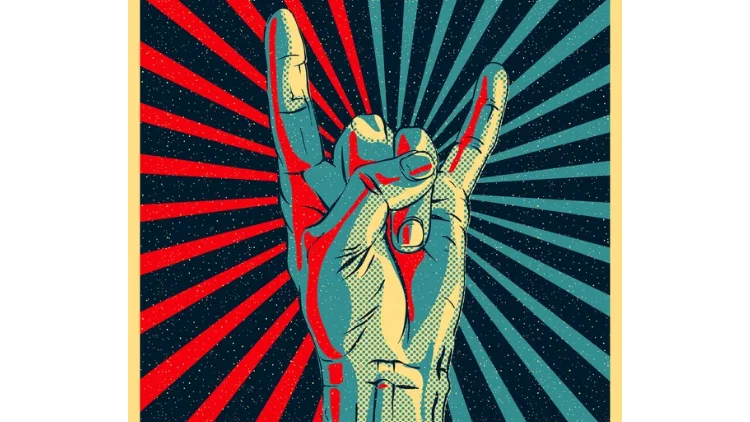
Tempolor and Metal Music
Are you a heavy metal fan looking for intense, high-energy music without the hassle of copyright issues? Look no further than Tempolor. Powered by cutting-edge AI, Tempolor generates unique, royalty-free music across a variety of genres, including heavy metal, electronic, orchestral, and more.
With Tempolor, you can create custom metal tracks featuring crushing riffs, pounding drums, and epic breakdowns. These tracks are perfect for gaming content, promotional videos, or any project that needs bold soundscapes and raw energy. Whether you’re working on YouTube videos, podcasts, or need background music for personal or professional use, Tempolor provides the high-quality, copyright-free tracks you need.
Read more:
What Genre of Music is the Most Popular?
